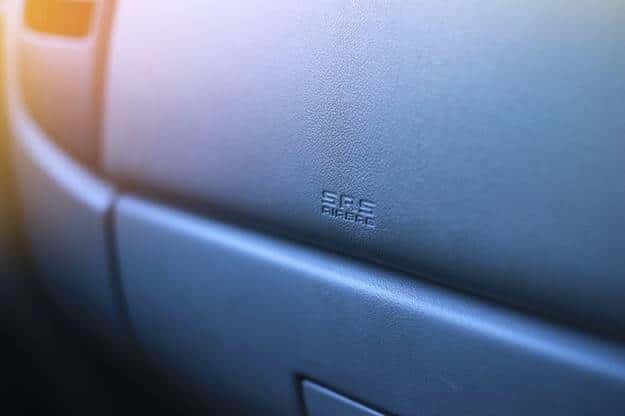How To Fix Automatic Lock On Car Door Easily
Is your automatic car door lock acting up, preventing you from accessing or securing your vehicle? At CARDIAGTECH.NET, we understand the frustration this can cause and offer solutions to diagnose and repair the issue effectively. Let’s explore how to troubleshoot your power lock system, covering potential electrical faults, broken components, and mechanical issues.
1. Understanding the Automatic Car Door Lock System
Automatic car door locks, also known as power door locks, are an integral part of modern vehicle convenience and security systems. They allow you to lock and unlock all doors simultaneously with the push of a button, enhancing safety and ease of use. Understanding how this system works is crucial for effective troubleshooting and repair.
1.1. Components of the Automatic Car Door Lock System
The automatic car door lock system consists of several key components that work together:
- Door Lock Actuators (Solenoids): These are small electric motors located inside each door that physically move the locking mechanism. When activated, they either lock or unlock the door.
- Door Lock Switches: These switches are typically located on the door panels or center console and allow you to control the door locks manually.
- Remote Key Fob: This device uses radio frequencies to send signals to the car’s computer, enabling you to lock and unlock the doors remotely.
- Body Control Module (BCM): The BCM is the central computer that controls various electrical functions in the car, including the door locks. It receives signals from the door lock switches and key fob and sends commands to the door lock actuators.
- Wiring and Fuses: These components provide the electrical connections and protection necessary for the system to operate. Wires carry the signals and power between the various components, while fuses protect the system from overloads and short circuits.
1.2. How the System Works
When you press the lock or unlock button on the door switch or key fob, a signal is sent to the BCM. The BCM then sends a signal to the appropriate door lock actuators, which either lock or unlock the doors. The actuators contain a small motor that moves a lever or rod connected to the door lock mechanism.
Alt Text: Diagram of a car door lock mechanism showing the actuator, linkages, and lock cylinder.
2. Common Reasons for Automatic Car Door Lock Failure
Several factors can cause automatic car door locks to malfunction. Identifying the root cause is the first step in diagnosing and repairing the problem.
2.1. Dead Key Fob Battery
A dead key fob battery is one of the most common reasons for automatic car door locks not working. The key fob relies on battery power to send signals to the car’s computer. When the battery is weak or dead, the fob may not be able to transmit the signal, preventing the doors from locking or unlocking remotely.
2.2. Faulty Key Fob
Even with a fresh battery, the key fob itself may be faulty. Internal components can fail, or the fob may lose its programming.
2.3. Blown Fuse
A blown fuse in the car’s electrical system can also cause the automatic door locks to stop working. Fuses are designed to protect electrical circuits from overloads. If there is a surge in electricity, the fuse will blow, cutting off power to the affected circuit.
2.4. Defective Door Lock Actuator
The door lock actuator is the component that physically moves the door lock mechanism. If the actuator fails, the door lock may not work, even if the rest of the system is functioning properly.
2.5. Broken or Damaged Wiring
The wiring that connects the various components of the automatic door lock system can become damaged over time. Wires can be pinched, cut, or corroded, leading to a loss of electrical connection.
2.6. Mechanical Issues
Sometimes, the problem may not be electrical at all. Mechanical issues within the door lock mechanism can also prevent the automatic door locks from working.
3. Step-by-Step Guide to Diagnosing and Fixing Automatic Car Door Lock Problems
Follow these steps to diagnose and fix common issues with your automatic car door locks. CARDIAGTECH.NET provides the tools and equipment you need to tackle these repairs effectively.
3.1. Checking the Key Fob
Step 1: Replace the Battery
The first step is to replace the key fob battery. Refer to your owner’s manual for the correct battery type and replacement procedure.
- Open the key fob casing.
- Remove the old battery.
- Install the new battery, ensuring correct polarity.
- Reassemble the key fob and test the lock and unlock buttons.
Step 2: Test the Key Fob Programming
If replacing the battery doesn’t solve the problem, the key fob may need to be reprogrammed. This typically requires specialized equipment and can be done at a dealership or a qualified automotive locksmith.
- Contact your local car dealer or automotive locksmith.
- Schedule an appointment to have the key fob tested and reprogrammed.
- Follow the technician’s instructions to reprogram the key fob.
3.2. Inspecting the Fuses
Step 1: Locate the Fuse Box
The fuse box is typically located under the dashboard, in the glove compartment, or in the engine compartment. Consult your owner’s manual for the exact location.
Step 2: Identify the Door Lock Fuse
Refer to the fuse box diagram in your owner’s manual to identify the fuse that controls the door locks.
Step 3: Check the Fuse
Remove the fuse using a fuse puller and inspect it. If the fuse is blown, the metal strip inside will be broken.
Step 4: Replace the Fuse
Replace the blown fuse with a new fuse of the same amperage rating.
Step 5: Test the Door Locks
Test the door locks to see if the new fuse has resolved the problem.
3.3. Testing the Door Lock Actuator
Step 1: Remove the Door Panel
To access the door lock actuator, you will need to remove the door panel. This typically involves removing screws, clips, and other fasteners.
Step 2: Locate the Door Lock Actuator
The door lock actuator is usually located inside the door, near the door latch mechanism.
Step 3: Test the Actuator with a Multimeter
Use a multimeter to test the actuator’s electrical connections. Set the multimeter to measure voltage and check if the actuator is receiving power when the door lock switch is activated.
Step 4: Replace the Actuator
If the actuator is not receiving power or is not functioning properly, it will need to be replaced. Disconnect the electrical connector and remove the actuator from the door. Install the new actuator and reconnect the electrical connector.
Alt Text: A new door lock actuator ready for installation.
3.4. Checking the Wiring
Step 1: Inspect the Wiring Harness
Visually inspect the wiring harness that connects to the door lock actuator and door lock switch. Look for any signs of damage, such as frayed wires, cracked insulation, or corroded connectors.
Step 2: Test for Continuity
Use a multimeter to test the continuity of the wires. Set the multimeter to measure resistance and check if there is a continuous path between the two ends of each wire.
Step 3: Repair or Replace Damaged Wires
If you find any damaged wires, repair them using electrical tape or wire connectors. If the damage is severe, you may need to replace the entire wiring harness.
3.5. Addressing Mechanical Issues
Step 1: Inspect the Linkages
Check the linkages that connect the door lock actuator to the door lock mechanism. Make sure that they are not bent, broken, or disconnected.
Step 2: Lubricate the Moving Parts
Lubricate the moving parts of the door lock mechanism with a silicone-based lubricant. This can help to free up any sticking or binding components.
Step 3: Adjust the Door Latch
If the door latch is not properly aligned, it can prevent the door locks from working correctly. Adjust the door latch as needed to ensure proper alignment.
4. Tools and Equipment Needed
To diagnose and fix automatic car door lock problems, you will need the following tools and equipment:
- Multimeter: A multimeter is essential for testing electrical circuits and components.
- Fuse Puller: A fuse puller makes it easy to remove fuses from the fuse box.
- Screwdrivers: You will need a variety of screwdrivers to remove door panels and other components.
- Pliers: Pliers are useful for gripping and manipulating wires and connectors.
- Wire Strippers: Wire strippers are used to remove the insulation from wires.
- Electrical Tape: Electrical tape is used to insulate and protect electrical connections.
- Wire Connectors: Wire connectors are used to join two or more wires together.
- Silicone Lubricant: Silicone lubricant is used to lubricate the moving parts of the door lock mechanism.
- Socket Set: You’ll need a socket set for various nuts and bolts.
- Panel Removal Tools: These tools help remove door panels without damaging them.
CARDIAGTECH.NET offers a wide range of automotive tools and equipment to help you tackle any repair job.
5. Advanced Troubleshooting Techniques
If you’ve tried the basic troubleshooting steps and are still having problems with your automatic car door locks, you may need to use more advanced techniques.
5.1. Using a Scan Tool
A scan tool can be used to read diagnostic trouble codes (DTCs) from the car’s computer. These codes can provide valuable information about the source of the problem.
- Connect the scan tool to the car’s diagnostic port.
- Turn on the ignition.
- Follow the scan tool’s instructions to read DTCs.
- Research the DTCs to determine the cause of the problem.
5.2. Checking the Body Control Module (BCM)
The BCM is the central computer that controls the automatic door locks. If the BCM is malfunctioning, it can cause a variety of problems.
- Locate the BCM.
- Inspect the BCM for any signs of damage.
- Test the BCM’s electrical connections.
- Replace the BCM if necessary.
5.3. Diagnosing Intermittent Problems
Intermittent problems can be particularly challenging to diagnose. These problems occur sporadically and may not be present when you are trying to troubleshoot the system.
- Try to identify any patterns or conditions that trigger the problem.
- Use a multimeter or scan tool to monitor the system while the problem is occurring.
- Check for loose connections or damaged wires.
6. Preventing Future Problems
Regular maintenance and care can help prevent future problems with your automatic car door locks.
6.1. Regular Maintenance
- Lubricate the Door Lock Mechanisms: Lubricate the door lock mechanisms regularly with a silicone-based lubricant.
- Inspect the Wiring: Inspect the wiring for any signs of damage.
- Replace Worn Parts: Replace any worn or damaged parts as soon as possible.
6.2. Proper Usage
- Avoid Slamming Doors: Avoid slamming doors, as this can damage the door lock mechanisms.
- Protect the Key Fob: Protect the key fob from damage and keep it away from water and extreme temperatures.
7. When to Seek Professional Help
If you are not comfortable working on your car’s electrical system or if you have tried the troubleshooting steps and are still having problems, it is best to seek professional help.
7.1. Finding a Qualified Mechanic
- Ask for Recommendations: Ask friends, family, or coworkers for recommendations.
- Check Online Reviews: Check online reviews to see what other customers have to say about the mechanic.
- Look for Certifications: Look for mechanics who are certified by the National Institute for Automotive Service Excellence (ASE).
7.2. What to Expect from a Professional Repair
- Diagnosis: The mechanic will diagnose the problem and provide you with an estimate for the repair.
- Repair: The mechanic will repair the problem using high-quality parts and equipment.
- Warranty: The mechanic should provide a warranty on the repair.
8. Cost of Repairing Automatic Car Door Locks
The cost of repairing automatic car door locks can vary depending on the cause of the problem and the type of car you have.
| Repair | Estimated Cost |
|---|---|
| Key Fob Battery Replacement | $5 – $20 |
| Key Fob Reprogramming | $50 – $150 |
| Fuse Replacement | $1 – $10 |
| Door Lock Actuator Replacement | $100 – $300 per door |
| Wiring Repair | $50 – $200 |
| BCM Replacement | $200 – $500 |
These are just estimates, and the actual cost of the repair may vary.
9. Benefits of Functional Automatic Car Door Locks
Having functional automatic car door locks offers several benefits:
- Convenience: Lock and unlock all doors simultaneously with the push of a button.
- Safety: Ensure all doors are locked while driving, preventing accidental opening.
- Security: Protect your car and its contents from theft.
- Resale Value: Maintain the value of your car by keeping all features in good working order.
10. CARDIAGTECH.NET: Your Partner in Automotive Repair
At CARDIAGTECH.NET, we are committed to providing you with the highest quality automotive tools, equipment, and information. We understand the challenges you face as a car owner or technician, and we are here to help you succeed.
10.1. High-Quality Tools and Equipment
We offer a wide selection of high-quality tools and equipment from leading brands. Whether you need a multimeter, scan tool, or door panel removal tools, we have you covered.
10.2. Expert Advice and Support
Our team of experts is available to provide you with advice and support. We can help you diagnose problems, choose the right tools, and perform repairs.
10.3. Commitment to Customer Satisfaction
We are committed to your satisfaction. We offer a hassle-free return policy and a satisfaction guarantee.
Don’t let malfunctioning automatic car door locks compromise your convenience and safety. With the right tools and knowledge, you can diagnose and fix the problem yourself. Trust CARDIAGTECH.NET to provide you with everything you need to keep your car in top condition.
Facing automatic lock issues? Contact CARDIAGTECH.NET now for expert advice and the right tools to get your car doors working perfectly again! Call us at +1 (641) 206-8880 or visit our store at 276 Reock St, City of Orange, NJ 07050, United States. Shop now at CARDIAGTECH.NET!
Frequently Asked Questions (FAQ)
Here are some frequently asked questions about automatic car door locks:
- Why are my automatic door locks not working?
- Common causes include a dead key fob battery, faulty key fob, blown fuse, defective door lock actuator, broken wiring, or mechanical issues.
- How do I know if my key fob battery is dead?
- If your key fob doesn’t lock or unlock the doors, even when you’re close to the car, the battery might be dead. Try replacing it.
- Where is the fuse box located in my car?
- The fuse box is usually under the dashboard, in the glove compartment, or in the engine compartment. Consult your owner’s manual for the exact location.
- How do I check a fuse?
- Remove the fuse using a fuse puller and inspect it. If the metal strip inside is broken, the fuse is blown and needs replacement.
- What is a door lock actuator?
- The door lock actuator is the electric motor inside the door that physically moves the locking mechanism when you press the lock/unlock button.
- How do I test a door lock actuator?
- Use a multimeter to check if the actuator is receiving power when the door lock switch is activated. If not, the actuator might be faulty.
- Can I fix a broken wire myself?
- Yes, you can repair a broken wire by using electrical tape or wire connectors. Ensure the connection is secure and insulated properly.
- What kind of lubricant should I use for door locks?
- Use a silicone-based lubricant to keep the moving parts of the door lock mechanism working smoothly.
- When should I seek professional help?
- If you’re not comfortable working on your car’s electrical system or if you’ve tried troubleshooting and the problem persists, it’s best to consult a professional mechanic.
- How much does it cost to repair automatic car door locks?
- The cost varies based on the problem. Key fob battery replacement is cheap, while replacing a door lock actuator can cost between $100 and $300 per door.








